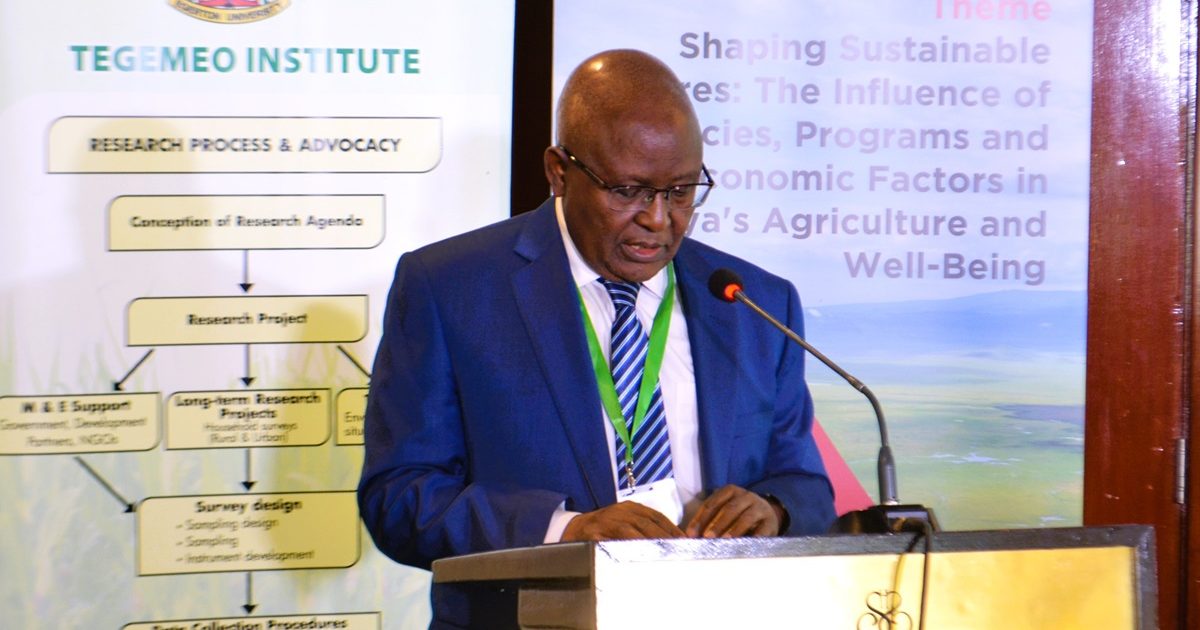Experts and policy makers have singled out land subdivision as one of the biggest threats to the sustainability of the agricultural sector and food security in the country.
They blamed population explosion, financial woes and lack of clear policy framework on land ownership for the continued land fragmentation.
Egerton University Vice Chancellor Prof Isaac Kibwage said despite the existence of a land use policy which dictates that agricultural land should not be subdivided to below five acres, failure for its proper implementation and enforcement continued to hinder controlled land sub-division.
The VC emphasised the urgent need for formulation of relevant policies to combat land fragmentation and enhance food security in the country.
While indicating that it was time to identify and protect areas where land subdivision is rife to boost food production, the Vice Chancellor said the practice risks Kenya’s economic growth as agriculture is the biggest contributor to the country’s Gross Domestic Product (GDP) and food security.
“Our agricultural policies must be research-driven to address this emerging challenge of uncontrolled land use,” Prof Kibwage pointed out.
The VC made the remarks when he officially inaugurated a stakeholder conference organised by the University’s Tegemeo Institute of Agricultural Policy, focusing on the challenges bedeviling Kenya’s agricultural sector held at Egerton University main campus at Njoro.
The event brought together experts, policy analysts, agri-prenuers, and government officials who addressed critical issues including land fragmentation and decreasing agricultural productivity.
The Vice Chancellor noted that in developed countries like the United States of America and the United Kingdom, existing laws prohibit subdivision of farmland ensuring there are large parcels of farmland for enhanced food production.
He added that such developed countries have their economies rely on other sectors, reducing pressure on agricultural land as opposed to Kenya where the economy which is agriculture based continued to face the threats of land Sub-division and climate change leading to food insecurity.
Prof Kibwage emphasised the need for a shift of mindset among Kenyans from the culture of owning land for agriculture to leasing land saying that such a move will help more land to be used in production and not just being owned by somebody.
The Vice Chancellor’s and other experts’ concerns was informed by the current trends where land buying companies have invaded the agricultural- rich areas of Njoro, Molo, Gilgil, Mau Narok and Naivasha where they were buying vast farmlands and subdividing them into 50 by 100-feet plots, which cannot sustain agricultural activities.
Nakuru is one of Kenya’s bread baskets renowned for production of potatoes, cabbages, carrots, wheat and maize in areas such as Dundori, Ngorika, Rongai, Solai, Subukia and Bahati.
The county is one of the four main maize-growing areas in the country ranked by the International Maize and Wheat Improvement Centre (CIMMYT) as an international research centre. The other major maize growers recognised by CIMMYT are Trans Nzoia, Uasin Gishu and Bungoma.
Director of Tegemeo Institute Prof Gideon Obare stated that population increase and the establishment of infrastructures and urbanisation were taking a big toll on arable land which is significantly reducing area for food production.
He regretted that the urban expansion was replacing agricultural farmlands and other natural vegetation, thereby affecting habitat quality and leading to serious environmental degradation, where he added that the random, unplanned growths of environmentally degraded squatter settlements were now emerging in rural fringes.
“The urban periphery arable land is being eaten up by high rise buildings,” added the Don.
Prof Obare further observed that land sub-division, intensive cultivation and urbanisation had resulted in conversion of large-scale farms into small holder units hence the gradual diminishment of plantation forests.
A report compiled by the Tegemeo Institute of Policy Research and Analysis indicates that shrinking farm sizes was impacting negatively on efforts to reduce poverty and food insecurity, especially given the limited employment opportunities generated by the country’s manufacturing and services industries.
In the report dubbed ‘Emerging Land Issues in Kenyan Agriculture and their Implications for Food Policy and Institutional Reforms in Kenya’ the policy research institute states that as a result of rapid population increase, land parcels in the areas of high agricultural potential are decreasing in size, affecting food production.
“The country’s population has increased significantly, growing from 11 million in 1970 to 39.5 million in 2011. At the current rate of growth, it will double in the next 27 years, to reach 81 million in 2039. Medium-scale farms in Kenya now control a paltry 0.84 million hectares while the large- scale farms, both foreign and domestic, account for a mere 0.69 million hectares. The remaining 2.63 million hectares is controlled by smallholder farmers” states the Policy Research and Analysis Institute.
By Esther Mwangi





